"Peace!"
That one word, blazoned across the front pages of newspapers nationwide, heralded the end of World War II. It also signaled a long anticipated return to "normalcy" for millions of Americans as newly discharged G.I.s and their families began to pick up the pieces of interrupted lives. Aided by the Servicemen's Readjustment Act of 1944 (commonly known as the "G.I. Bill of Rights"), veterans found themselves with opportunities for a future brighter than they could have imagined before the war. Under the Act, which provided financial assistance through low-interest loans, thousands were able to attend college, finance a home, and start up new businesses. It was a time for settling down, beginning a family, and building a career.
The end of the war ushered in an era of unprecedented prosperity. Minnesota companies like 3M, General Mills and Northwest Airlines prospered, with many branching out into national and international markets with innovative products and services.
For Minnesota women, many of whom had tasted a new independence while in the military or in jobs left vacant by fighting men, the end of the war meant a return to more traditional roles: wife and mother, secretary, telephone operator, and teacher. Some, encouraged by the challenges met during the war, continued to seek less traditional paths, breaking new ground for generations to come.
Members of the state's minority groups had also made strides for equality during the war, but still faced discrimination at home. The long struggle of the Civil Rights movement began to gather strength in the post-war years as people of color began to be recognized for their contributions and the nation's social conscience was slowly awakened.

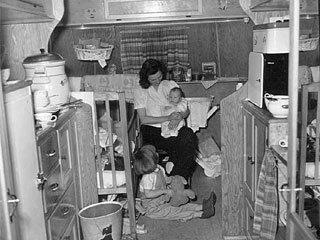

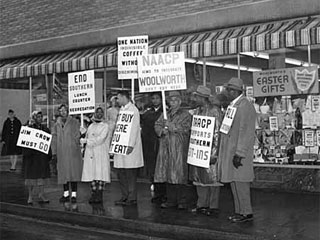
The G.I. Bill
"[The G.I. Bill] put me all the way through Veterinary School but one quarter – I think it was the last quarter. So that was quite an investment."—Bee Hanlon (WAVES), retired DVM and University of Minnesota professor
"I went [to the University of Minnesota] on the G.I. Bill...I certainly treated my college education after the war as something serious that I wanted to get accomplished. I’m sure it was the war that did that...I probably would have finished college but after the war I knew darned well I wanted to." —Bartley M. Foster (US Army), retired Commercial Real Estate Development Executive, Northwestern National Life Insurance Company
"Never did use the GI Bill. What a shame. I could have been a professional student. Gone for masters, doctorate...studied anything I wanted. What an opportunity was given us and I never used it!"—Stuart A. Lindman (US Army), retired radio and television personality
As World War II began to come to a close, a grateful nation sought ways to help returning veterans ease back into civilian life and reward them for their sacrifice and service, and to stave off another depression due to high levels of unemployment. In the spring of 1944 Congress approved The Servicemen's Readjustment Act, or "G.I. Bill of Rights," which provided financial assistance for veterans wishing to pursue further education, and offered low-interest loans for the purpose of purchasing a home or farm, or starting up a new business. The G.I. Bill also mandated hospitalization benefits, and preferential treatment of veterans in hiring. Those unable to find employment could take advantage of the 52-20 clause, which paid veterans $20 each week for up to 52 weeks while they looked for work.
The number of veterans taking advantage of the G.I. Bill education benefit can be seen in University of Minnesota enrollment figures from the post-war years. Total enrollment at the University for the 1944-1945 school year was just 13,273. Two years later, 1946-1947, enrollment reached its post-war peak at 36,578, which included a staggering 18,929 veterans - nearly 52% of the U's student population. When the benefits of the original G.I. Bill ended on July 25, 1956, 7.8 million of the country's 16 million World War II veterans had taken advantage of this educational opportunity.
At a time when housing was at a premium across the country, low-interest home loans were another appealing benefit of the G.I. Bill. A veteran could take out a loan with a low interest rate and purchase or build a home for his family with zero money down. For those who were living in crowded temporary housing, such as trailers or Quonset huts, the home loan guaranty was the ticket to a dream come true. Loans were also available to help finance the purchase of a farm or business. By 1955 the Veterans Administration had granted 4.3 million home loans with a total value of $33 billion.
The most controversial benefit, represented by the 52-20 clause, was unemployment pay. Only 20% of the federal funding reserved for this benefit was paid out as veterans found jobs or elected to return to school. Many who refused it did so out of pride, determined to succeed without this "welfare" assistance.
The impact of the G.I. Bill of Rights on the lives of those members of Minnesota's Greatest Generation who took advantage of its opportunities was tremendous, opening doors and altering life courses.
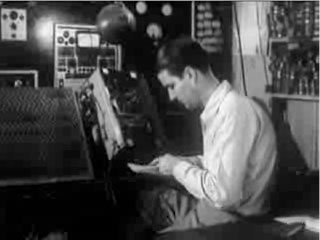
Business Is Booming!
The post-war boom was a time of great prosperity for many Minnesota-based businesses as they utilized new technology developed for the war effort, and expanded their operations locally, nationally and globally.
Innovation on the part of gifted individuals also played a role in the successful growth of local companies. Engineer Arthur Pejsa of Honeywell was assigned to work on projects for the space race, including the Thor, Titan missile and Apollo projects. Carl Kuhrmeyer helped to develop the Thermofax copying system for . Electrical engineer Earl Bakken, co-founder of Medtronic, developed the first pacemaker, the life-saving instrument that would become the company's flagship product. Carl Platou was inspired to apply business principles to health care, and established branches of Fairview Hospital in the suburbs. Agricultural Extension Service Agent Richard Swanson assisted the farmers of Anoka County with the latest in farming methods and technology as they enlarged and mechanized their farms.
The boom extended into the construction trades as real estate developers, seeing the opportunity provided by the housing shortage, bought up land on the edges of Minnesota cities and built entire neighborhoods of cookie-cutter tract homes.
Retail operations flourished, too, as wartime shortages eased and Minnesotans found themselves with more expendable income and more leisure time. New appliances, once scarce as materials for manufacture were diverted to the war effort, became readily available and were snapped up by new homeowners eager to feather their nests with the latest in kitchen and laundry conveniences - and new-fangled television sets.
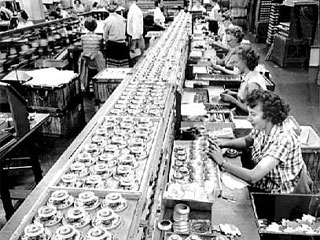
Back To The Kitchen?
June Cleaver. Donna Reed. Harriet Nelson. The 1950s call to mind apron-bedecked stay-at-home moms with a plate of fresh, made-from-scratch cookies in one hand and a dust mop in the other, whose lives revolved around home, family, bridge clubs, and volunteer work. While some women in the post-war years fit this stereotype, many did not.
World War II had encouraged women to consider broader horizons. Many joined women's branches of the military or held jobs that fighting men had vacated and found a new identity. When the war ended and the jobs were relinquished to men returning from service, many women returned to traditional jobs as teachers, secretaries, or telephone operators. Others pursued more education, and began the upward climb into previously male-dominated fields.
Emily Day, who held a master's degree in social work and had previously worked at settlement houses, pursued a more traditional role as an elementary school teacher. She returned to college while raising her young children, taking education classes through the University of Minnesota by correspondence or on weekends, and accepted a teaching position when her youngest child was ready for school.
For Bee Gutcheck Hanlon, a Navy veteran with an interest in entomology, the appeal of a free college education on the G.I. Bill opened up a realm of possibilities, and enabled her to become one of the first women veteranary students to graduate from the University of Minnesota College of Veterinary Medicine. She remained at the University in research, and later was hired as the first female veterinary professor for the College, and the first woman veterinary radiologist to be certified in Minnesota.
Selina (Lee) Sworsky, a British war bride who grew up working in the woolen mills of her native Bradford in Northern England, met her American G.I. husband while serving with the British Women's Auxiliary Air Force. After her arrival in America she and her husband began a family, and it wasn't until her youngest child was old enough for school that Lee took a job at a nearby bakery, and later worked with a friend in a housecleaning business.

"What About Us?" - The Fight For Civil Rights
Racial discrimination was a deeply rooted problem by the time Americans turned their attention to World War II. In January 1941 A. Philip Randolph had called for a march on Washington, D.C. in protest of discriminatory hiring practices in defense industries. The march was postponed after President Franklin D. Roosevelt signed Executive Order 8802, which prohibited such policies by federal agencies and defense contractors and established the Fair Employment Practice Committee to help insure compliance. An estimated 2.5 million African American men and thousands of black women stepped up to serve their country in World War II, but they did so in segregated units.
In 1942 a group of interracial students in Chicago founded the Congress of Racial Equality, an organization that sought change through nonviolent resistance. The following summer, deadly race riots in the northern cities of Detroit and New York City's Harlem district brought the problem of race to national attention. Violence against African Americans in the south in 1946 prompted President Truman to appoint a presidential committe on civil rights. The committee made its recommendations the following year, which included desegregation in the armed forces and in interstate transportation, a permanent Fair Employment Practice Committee with powers of enforcement, guaranteed voting rights for minority citizens, and the passage of federal laws that would punish violence against people of color. The next year President Truman issued Executive Order 9981, which established a Fair Employment Board to monitor hiring practices in the federal civil service, and executive order 9981, which started desegregation in the military. The other recommendations made by the committee were held up by the Senate.
The post-war housing crisis hit African Americans especially hard, with availability in many cases restricted on the basis of race. In 1948 the Supreme Court ruled in Shelley v. Kraemer that such restrictions were in violation of the equal protection clause of the Fourteenth Amendment. Segregation in schools was another issue that came to a head after the war. In 1954, in the historic Brown v. Board of Education case, the Supreme Court unanimously ruled that such segregation was also in violation of the Fourteenth Amendment, and the long, controversial process of desegregation of schools began the following year. Two years later, nine black students were admitted to Central High School in Little Rock, Arkansas by Federal district court order, but the governor called out the National Guard to prevent their attendance. The court ordered the governor to comply with its decision and the Guard was withdrawn, only to be replaced by an angry mob. President Eisenhower stepped in with armed federal troops who escorted the students to class.
In the mid-1950s the Reverand Dr. Martin Luther King, Jr. and the controversial Malcolm X emerged as a civil rights leaders, and Rosa Parks made her famous stand for racial equality when she was arrested in Montgomery, AL for refusing to give up her seat on a city bus. The turbulent decade of the 1960s began with stepped-up efforts to desegregate transportation and with numerous lunch counter sit-ins, such as the protest of Woolworth's in downtown Minneapolis. A civil rights bill introduced by President Kennedy to end discrimination in public places became law in 1964. Violence continued to plague civil rights workers, and claimed among its victims Dr. King, Jr., whose leadership in non-violent protests had made an important impact on the movement. By the end of the decade, a federal law prohibiting housing discrimination was in effect and an executive order for equal employment opportunity had been issued.
With perseverence, some African Americans in Minnesota found success in the post-war boom. The Samples family moved to the all-white suburb of Richfield in 1951 to become the first black family to live there, and stayed for many years in spite of an openly negative feeling on the part of white residents. John Leslie Brown, Sr. was able to establish his own office machines company in St. Paul, and became one of the first African American men admitted to membership in the Knights of Columbus and Rotary Club. Matthew Little came to Minnesota after the war when he was denied entrance into medical school. Spurred on by the denial of a job with the Minneapolis Fire Department he became a prominent member of the local chapter of NAACP and was able to help other young black men achieve their dream of becoming a firefighter. In 1963 Emily Day's family of Richfield sponsored a young black student from Africa in a foreign exchange program and was pleased to find that he fit right into the neighborhood. These and other members of Minnesota's Greatest Generation helped to pave the way for greater acceptance of Minnesotans of color in the decades that followed.
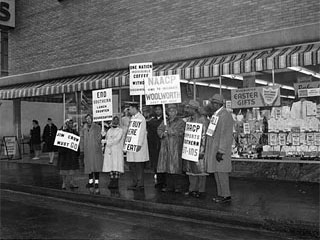
Citations:
- St. Paul Dispatch, August 14, 1945. Minnesota Historical Society: Minnesota's Greatest Generation Project - V-J Day
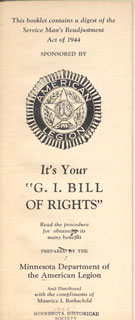 Document: It's your "G.I. Bill of Rights."
Document: It's your "G.I. Bill of Rights." - 3M History At A Glance. 3M, 2008.
- General Mills: Our History. General Mills, 2008.
- Northwest Historical Timeline: 1940s. Northwest Airlines, 2008.
- Northwest Historical Timeline: 1950s. Northwest Airlines, 2008.
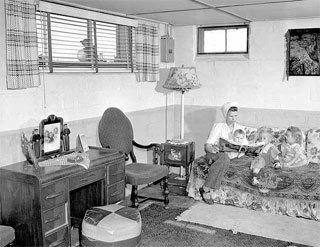 Photo: Woman and three children in basement house, 1947.
Photo: Woman and three children in basement house, 1947.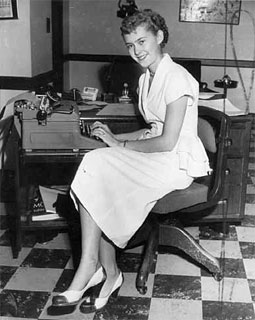 Photo: Fay N. Christenson, legal secretary at her desk, 1952.
Photo: Fay N. Christenson, legal secretary at her desk, 1952.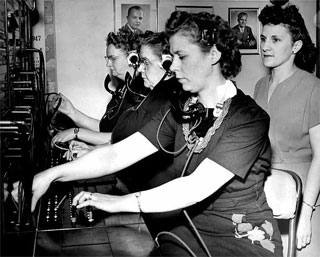 Photo: Minnesota State Capitol main switchboard operators at work: Frances Stevens, Anna Kjeldsen, Helen Frey and Chief operator,
Lucille Woolever, 1947.
Photo: Minnesota State Capitol main switchboard operators at work: Frances Stevens, Anna Kjeldsen, Helen Frey and Chief operator,
Lucille Woolever, 1947. Photo: Mrs. Evelyn Graupman, kindergarten teacher, telling students a story, Gibbs School, Falcon Heights, 1959.
Photo: Mrs. Evelyn Graupman, kindergarten teacher, telling students a story, Gibbs School, Falcon Heights, 1959.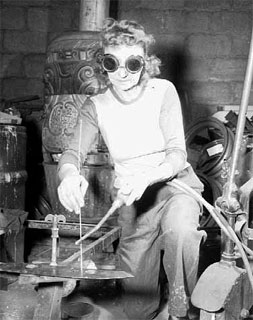 Photo: Woman working in a shop forging metals, 1950.
Photo: Woman working in a shop forging metals, 1950.- African American Civil Rights Movement. Minnesota Historical Society: Library: History Topics, 2008.
- Hanlon, Bee; Linda Cameron, Interviewer, Griselda (Bee) Hanlon oral history interview, 2008.
- Foster, Bartley M.; Douglas Bekke, Interviewer, Bartley M. Foster Oral History Interview, Minnesota Historical Society Oral History Collection.
- Lindman, Stuart A.; Douglas Bekke, Interviewer, Stuart A. Lindman Oral History Interview, Minnesota Historical Society Oral History Collection.
- Lindman, Stuart A.; Linda Cameron, Editor, In their Words: Stuart A. Lindman: "I Had No Idea I'd Been Hit!" Minnesota's Greatest Generation, Minnesota Historical Society, 2007.
- Servicemen's Readjustment Act (USA). Wikipedia.org, 2008.
- Born of Controversy: The GI Bill of Rights. United States Department of Veterans Affairs, 2007.
- Text: University of Minnesota Enrollment, 1945-1955.
- Servicemen's Readjustment Act (1944). An act to provide Federal Government aid for the readjustment in civilian life of returning World War II veterans, June 22,1944; Enrolled Acts and Resolutions of Congress, 1789-1996; General Records of the United States Government; Record Group 11; National Archives. Our Documents, 2008.
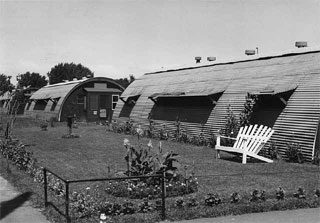 Photo: 1500 Buchanan Street Northeast, Minneapolis, 1946.
Photo: 1500 Buchanan Street Northeast, Minneapolis, 1946.
- Our History. Honeywell International, 2004-2008.
- Pejsa, Arthur and Jane; Ben Petry and Linda Cameron, Interviewers, Oral History Interview, 2008.
- Kuhrmeyer, Carl A.; James E. Fogerty, Interviewer, Carl A. Kuhrmeyer Oral History Interview, Minnesota's Greatest Generation Oral History Project, Minnesota Historical Society Oral History Collection, 2005-2008.
- 3M: A Century of Innovation. 3M Company, 2008.
 Photo: Thermofax duplicating machine, manufactured by 3M.
Photo: Thermofax duplicating machine, manufactured by 3M.- Oral History Collection: Pioneers of the Medical Device Industry in Minnesota: Earl E. Bakken, 1995-2000. Minnesota Historical Society, 2008.
- Medtronic: Our History. Medtronic, 2008.
- Platou, Carl; James E. Fogerty, Interviewer, Carl Platou Oral History Interview, Minnesota's Greatest Generation Oral History Project, Minnesota Historical Society Oral History Collection, 2005-2008.
- University of Minnesota Extension Service Photo Album. Regents of the University of Minnesota, 2001.
- Anoka County Historical Society, 2008.
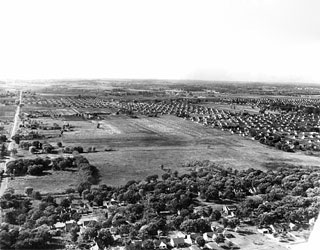 Photo: Aerial views of Richfield near Wood Lake and Penn, 1952.
Photo: Aerial views of Richfield near Wood Lake and Penn, 1952.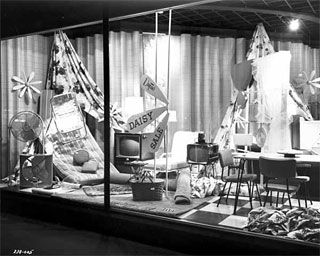 Photo: Daisy Sale window display, Dayton's, Minneapolis, 1956.
Photo: Daisy Sale window display, Dayton's, Minneapolis, 1956. Photo: Model kitchen, 1947.
Photo: Model kitchen, 1947. Photo: Television, radio and phonograph department, Dayton's Southdale, 1958.
Photo: Television, radio and phonograph department, Dayton's Southdale, 1958.
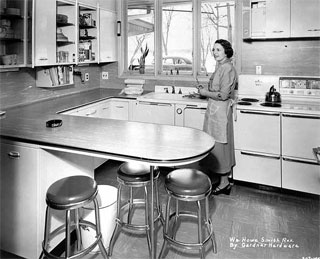 Photo: Kitchen of William Howe Smith residence, 3140 West Calhoun Boulevard, Apartment 116?, Minneapolis.
Photo: Kitchen of William Howe Smith residence, 3140 West Calhoun Boulevard, Apartment 116?, Minneapolis.- The War: Serving Stateside: "Free A Man To Fight!" In Their Words: Stories of Minnesota's Greatest Generation, Minnesota Historical Society, 2009.
 Photo: Emily Day, teaching at Richfield East Elementary School, 1958.
Photo: Emily Day, teaching at Richfield East Elementary School, 1958.- Day, Emily; Thomas Saylor, Interviewer, Richfield Oral history Project, Minnesota Historical Society Oral History Collection, 2007.
 Photo: Bee Wolf Hanlon and Delbert Carlson in surgery, 1954.
Photo: Bee Wolf Hanlon and Delbert Carlson in surgery, 1954.- Hanlon, Bee Gutcheck; Linda Cameron, Interviewer, Griselda (Bee) Hanlon Oral History Interview, Minnesota's Greatest Generation Project, 2008.
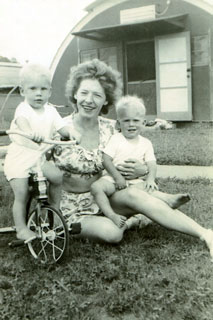 Photo: Lee Sworsky with Tony and Terry outside the family's Quonset hut, 1948.
Photo: Lee Sworsky with Tony and Terry outside the family's Quonset hut, 1948.- Sworsky, Selina (Lee); Linda Cameron Interviewer, Selina (Lee) Sworsky Oral History Interview, Minnesota's Greatest Generation Project, 2008.
- Reporting Civil Rights: timeline 1942-1973. The Library of America, 2003.
- A. Philip Randolph. MSN Encarta Encyclopedia, Microsoft Corporation, 1993-2008. All Rights Reserved.
- A Chronology of African American Military Service, part I. African Americans.com, 2007.
- Our Documents: Executive Order 8802 - Prohibition of Discrimination in the Defense Industry, June 25, 1941. Franklin D. Roosevelt Presidential Library and Museum, 2008.
- Congress of Racial Equality. MSN Encarta Encyclopedia, Microsoft Corporation, 1993-2008. All Rights Reserved.
- Executive Order 9981 - Establishing the President's Committee on Equality of Treatment and Opportunity In the Armed Forces, July 26, 1948. Harry S. Truman Library & Museum, 2008.
- 14th Amendment to the U.S. Constitution. National Park Service, Interpretive Staff, Martin Luther King, Jr. National Historic Site, 1997.
- Little Rock Central High School National Historic Site. National Park Service: We Shall Overcome, Historic Places of the Civil Rights Movement, 2008.
 Video: KSTP Film: 1960 Civil Rights.
Video: KSTP Film: 1960 Civil Rights.- Martin Luther King, Jr. MSN Encarta Encyclopedia, Microsoft Corporation, 1993-2008. All Rights Reserved.
- Malcolm X. MSN Encarta Encyclopedia, Microsoft Corporation, 1993-2008. All Rights Reserved.
- Rosa Parks: How I Fought for Civil Rights. Scholastic.com, Scholastic, Inc., 1996-2008. All Rights Reserved.
 Photo: NAACP picketing Woolworth's for integrated lunch counters, 1960.
Photo: NAACP picketing Woolworth's for integrated lunch counters, 1960.- Civil Rights Act (1964). Historical Documents.com, 2007. All Rights Reserved.
- Fair Housing laws and Presidential Executive Orders. U.S. Department of Housing and Urban Development, 2008.
- Executive Order 11478: Equal Employment Opportunity in the Federal Government, August 8, 1969. The U.S. Equal Employment Opportunity Commission, 2001.


